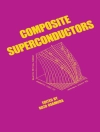This volume of a book "Applied Aspects of Nanophysics and Nano-engineering" is partially composed of short communications – proceedings of international symposium "Nanophysics and nano-engineering 2017" (venue: Mining university), and full-sized chapters, covering selected topics in depth. A variety of phenomena are described in this book. Smart nanostructured coatings, methods of synthesis based on both "top to bottom" (plasma deposition, remote methods) and "bottom to top" approaches are covered, as well as modeling approaches and analytical techniques. As before, ecological issues are highly addressed, such as materials for water purification and pollution prevention. Permanent interest in fullerenes as to one-dimensional carbon-based structures arises from their ability to be relatively easily modified by species of interest, for the purpose of bio-substrate delivery. Graphite exfoliation is utilized as a method to produce graphite nanoparticles and the modelling of fullers is reported. Issues of dielectric relaxation of solids have been a stunning topic for at least a few decades, and even now the interest in the dielectric relaxation approach seems to increase. This is because of the sensitivity of this non-destructive method to the conformational changes of flexible molecular moieties, brushes, and interchain segments. This avenue was focused on materials appliances of the method and technical development of the method and resolution, as well as the materials studied. Semiconductor technologies discussed in the book were related to developing solar concentrator systems (silicon technologies), heterojunction solar cells of eutectic gallium arsenide solid solutions for the development of alternative heterostructures based on the tunneling effect. "Exotic" semiconductors – diamonds with delta-doped layers known for their high temperature resistance – are studied via capacitance measurements. Directional crystallization was studied to produce rear-Earth compounds with anisotropic properties for the application of thermoelectric materials. Findings in sorption properties of clay minerals with singlet oxygen is underestimated as global in terms of environmental factors. Oil shale and oil shale ash Baltic basin studies are reported. Materials with magnetic properties synthesized by the sol-gel method are based on varrium-titanium ceramic and are studied via a variety of powerful experimental methods: SEM, XRD, SAXC, and SAPNS. Findings in the surface modification of zinc oxide films are modified by selenium. A special experimental setup is made possible using an ambient pressure approach without isolating the atmosphere to synthesize the hierarchically ordered surface structure. Interface properties related to water absorption on an aluminum surface are analyzed, and they are of interest for tribology applications of organopolymer compositions. Composite nanostructured materials for solar concentrator systems are discussed, as well as compounds for thermionic energy converters. It is believed that this book provides an unbiased sketch of progress in nanotechnology and related areas.
Andrey G. Syrkov
Applied Aspects of Nano-Physics and Nano-Engineering [PDF ebook]
Applied Aspects of Nano-Physics and Nano-Engineering [PDF ebook]
¡Compre este libro electrónico y obtenga 1 más GRATIS!
Idioma Inglés ● Formato PDF ● Páginas 322 ● ISBN 9781536147094 ● Editor Andrey G. Syrkov ● Editorial Nova Science Publishers, Inc. ● Publicado 2019 ● Descargable 3 veces ● Divisa EUR ● ID 7092792 ● Protección de copia Adobe DRM
Requiere lector de ebook con capacidad DRM












